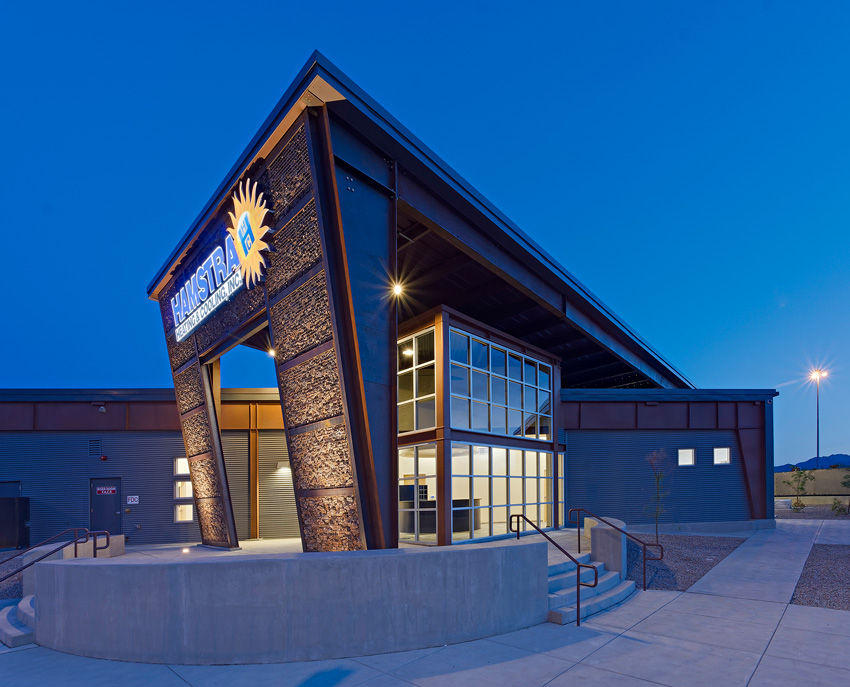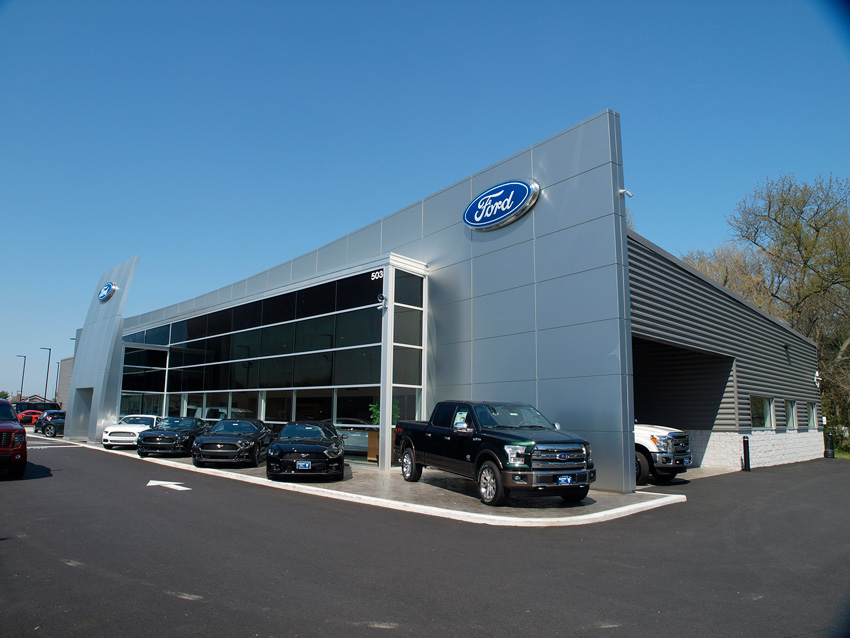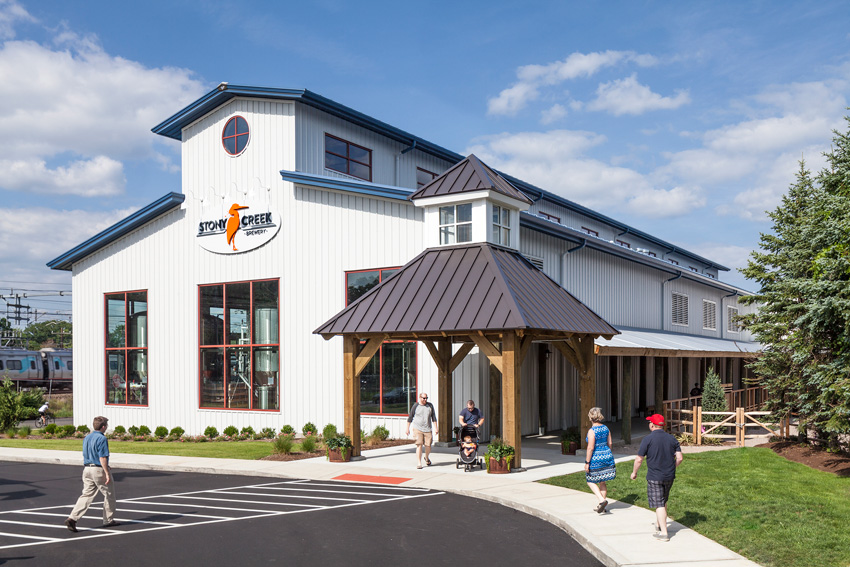Specifying the Latest in Metal Buildings
Design Requirements
This is the place to list the fundamental performance requirements that a metal building manufacturer will need to comply with. To begin with, it is useful to state something similar to “The building shall be designed by the manufacturer as a complete system. All components of the system shall be supplied or specified by the same manufacturer.” This basic criteria helps assure single-source responsibility and coordination of components. Next, it is useful to point out the applicable codes that need to be complied with related to the jurisdiction where the building is being constructed. This will include the appropriate versions of the Building Code, Energy Conservation Code, or ASHRAE standard, and any other applicable codes or standards. Then, the basic design loads for the building need to be stated, including applicable determinations for dead loads, live loads, collateral loads, (i.e. added dead loads hung from the building system, such as ceiling-hung electrical equipment, sprinklers, etc.), snow loads, seismic loads, and deflection requirements. The American Institute of Steel Construction (AISC) Design Guide #3 on Serviceability Considerations for Steel Buildings can be referenced for the appropriate deflection and drift criteria.
Submittals
If an integrated project-delivery process is not pursued, then particular information may need to be verified by the specifier prompting the need for submittals. Only the information that is substantially different from the contract documents should need to be requested as a submittal. Anything that is subsequently submitted and reviewed will then be relied upon by the metal building manufacturer as the basis for final fabrication, especially if there are any deviations between the contract documents and the submittals. Therefore, a thorough review, commentary, and ultimate approval of any submittals requested is critical and needs to be done in a timely manner to assure fabrication and construction schedules are met.
Quality Assurance
For work quality related to steel members and systems, the most common references are found in the MBMA Metal Building Systems Manual and the AISC Specification for Structural Steel Buildings (AISC 360).
Qualifications
There are three things to address here related to qualifications of the companies or individuals involved. The first is for the manufacturer who should be required to be accredited under the IAS AC472 program discussed earlier. The second qualification is for the design of the structural steel system, which shall be done by a licensed, professional engineer. The third is for the contractor who performs the building erection and assembly and shall be accredited under the IAS AC478 program described previously.
Warranty
A number of different warranty types may be possible and should be clearly called out since they affect the pricing of the final package. Metal exterior roof and wall panel warranties generally are available to include coverage against metal substrate perforations. Paint warranties generally include coverage for exterior prefinished color against chipping, cracking or crazing, blistering, peeling, chalking, or fading. Roof warranties may be available through the metal building contractor to include coverage for weather tightness of building enclosure elements after installation. It is best to check with the manufacturer and contractors to determine the type and extent of available warranties in order to understand all of the options.
Part 2: Products
In preparing a specification for a metal building package, many different product types are included in this single Division 13 section, instead of multiple specification sections across different divisions. Therefore, all of the different products that make up the metal building package need to be identified and specified here as well as shown appropriately on the drawings. Common products are identified as follows but should be selected and used only as appropriate to a particular specification for a particular project.

Photo courtesy of the MBMA
All of the products that make up a metal building package, from structural steel to accessories and everything in between, need to be identified in the metal building system specifications.
Structural Steel
The specification needs to distinguish between the requirements for primary framing (i.e., structural shapes, welded frames, etc.) and secondary framing (i.e., rollformed purlins, girts, etc.). The grade and quality of the steel for each of these structural components should be listed as well as any criteria for their respective finishes (primed, galvanized, etc.). Typically, the metal building manufacturer will use this performance information and the building design to identify the rest of the engineered structural steel. Note that fasteners and connections are part of any steel fabrication and construction. Metal building packages feature bolted connections and typically do not require any field welding to be called for. This aspect of a metal building structural system contributes directly to the speed of erection and overall time savings.
Roof System
A metal roof system is a key part of the appeal of a metal building since it can provide a long-lasting, watertight solution for both low-slope and high-slope roofing. There are, of course, choices that need to be made and specified in order to obtain the desired look and performance of the roof. The basic sheet steel stock should be called out, including any coating (typically 55 percent aluminum-zinc coated for low slope and painted galvanized for high slope). The next choice is the type of metal roofing (standing seam, ribbed, lap, other) as well as whether concealed or exposed fasteners are desired, which will lead to the thickness (gauge) and fabricated profile of the metal panels. Manufacturers will often have specific profiles and seaming conditions that have been tested for things like hydrostatic pressure (low slope), air pressure, and wind uplift according to standard UL or ASTM testing protocols, so the specific profile should be selected according to project needs. Here too, fasteners play an important role particularly for demonstrating successful testing results, so the proper fastener type, size, and material need to be identified and provided as part of the roof system package. All other related items for a complete roof system need to be identified as well, such as soffit panels and coordinated eave and rake elements.
For all of the roof system items, both the exposed and non-exposed metal surfaces need a final factory-applied finish. These can include a basic galvanized metal finish, a factory-painted finish, or a premium-quality polyvinylidene fluoride (PVDF) finish. Most manufacturers will include a multilayer approach to the finish and add in other protective or high-performance layers options too. For example, the finish can be treated to create a high solar reflectance contributing to a “cool roof” as recognized by national programs and standards for green and sustainable buildings. Whatever selection is made, the specific color(s) and treatments need to be selected and identified for each of the different faces of the various roofing system products.
Final accessories or related materials need to be called out for roofing too. Sealant is usually a part of all metal roofing systems and should be specified here, either as the manufacturer’s standard type or by identifying sealant performance requirements. In some cases, solar electric panels are installed using clamps that work very effectively on the standing seams of metal roofing. If those are needed, they should be specified and identified as appropriate.
Roof insulation is part of the roof system and may or may not be provided by the building manufacturer. If it is provided, then the required R-value per inch of insulation or the total assembly U-factor needs to be specified. Metal buildings can utilize a multitude of high-performance insulation options, which can meet or exceed energy conservation code requirements. ASHRAE 90.1 and the International Energy Conservation Code (IECC) have specific prescriptive requirements for metal buildings, although many metal building designers often utilize software tools such as COMcheck (free from the U.S. Department of Energy) to show energy-code compliance using the envelope trade-off approach. As such, there are several ways that insulation can be specified in a metal building, including laminated metal building insulation, cavity fill insulation (typically certified under NAIMA 202), and various liner systems installed between and over the roofing purlins. Other approaches use rigid insulation above the structure and protect the interior face accordingly. In any of these approaches, the details between the insulation installation and the connection of the metal roofing need to be coordinated to assure that the insulation is not compromised and that the metal roofing is securely and properly attached through the insulation to the appropriate structural components. This coordination is especially critical if the insulation is being provided “by others” since the metal building manufacturer can obviously not take responsibility for the work of others. The details of roof insulation should be thoroughly understood and specified accordingly to assure the best all-around outcomes.
Wall Systems
Metal building wall systems are not usually based on metal studs and framing but rather on enclosure and insulation approaches similar to metal roofs. Hence the types of materials and products that need to be specified are similar. If metal cladding is part of the design, then selection of the type of exterior metal wall panel (flat, ribbed, insulated metal panels, etc.) is the first choice to make, followed by the grade, gauge, and treatment of the metal. Further, specific pieces for wall trim, corners, and related wall system accessories will need to be specified. In this regard, it is often best to review the standard profiles and assembly details of a manufacturer to assure compatibility and weather tightness. All related details for finish and color (interior and exterior faces) along with appropriate fasteners and sealants need to be identified in the specification for a complete wall system.

Photo courtesy of the MBMA
A variety of wall systems are available with different appearances that can be provided, even on the same building.
Insulation of metal building walls is commonly performed in one of two ways. In the first common option, NAIMA 202 metal building insulation is placed between the structural components with or without an interior facing liner and secured in place. It may then be covered over, or not, with an interior finish system as selected by the design team and likely installed by others. In the second common option, insulated metal panels (IMPs) can be selected and specified. This product uses a solid core of rigid insulation (commonly urethane) sprayed between an inner and outer metal facing. The panel is nonstructural, meaning it does not carry any building loads directly. However, since it is quite rigid and installed across the wall girts and purlins, it transfers any dead loads and wind loads directly to the primary building structure. If this option is selected, it needs to be specified based on information from the IMP manufacturer with particular attention to sealing between the panels. In either insulation choice, the wall insulation R-value or the assembly U-factor needs to be specified.
Doors and Frames
Metal doors and frames may or may not be provided by a particular metal building manufacturer. If they aren’t, the details for the openings and framing need to be coordinated in the design and contract documents and specified in the appropriate Division 8 specification sections. If doors and frames are provided as part of the metal building package, then the coordination will be part of this Division 13 specification and internal to the manufacturer. When provided, they can take two common forms: personnel doors (i.e., standard swinging or sliding doors) and larger, non-personnel doors for equipment and vehicles (i.e., overhead doors, coiling metal doors, etc.). As such, the specification should be very clear on the type, size, and manufacturer of the doors and frames since there may be several choices available. The locations and pertinent identifying information for the various types should be shown on drawings and in door schedules. If there are wind rating requirements for the doors that need to match the envelope requirements for the building design, those need to be identified. All other details of the doors, including type, thickness, construction, finish, fire rating, and operation, should be called out in the specifications, or specific model numbers should be given that document that information. Hardware should also be addressed since it may or may not be provided with the doors. Typically, hardware is provided as part of any non-personnel doors, and there are likely options for type, material, finish, locking, weather sealing, etc. Standard personnel doors will likely need a separate hardware specification based on project preferences.
Glazing: Windows, Skylights, and Translucent Panels
Providing natural light into a metal building is no different than any other building. That means the specific glazing types used need to be identified and coordinated with the rest of the building system. If standard windows are incorporated, they may be provided as part of the building package and need to be identified by manufacturer, make, type, and model. The same is true for skylights. In either case, the performance requirements for energy conservation should be stated with reference to testing and labeling (as appropriate to manufactured units) by the National Fenestration Rating Council (NFRC). The four common criteria here are overall U-factor (the whole unit, not just the glass), solar heat gain coefficient (SHGC), air infiltration rate, and condensation resistance factor. Information such as this that is applicable to all units should be stated in the specifications, while locations and types should be shown on the drawings or in a typical window/glazing schedule.
Metal building manufacturers have also offered an option of manufactured glazing panels that essentially take the place of one or more metal panels. This is an efficient and effective means for bringing in daylight in either walls or roofs using clear, white, translucent, or even insulated glazing panels. They are often corrugated or ribbed in some fashion and made from fiberglass-reinforced resin with the capability of sustaining a 200-pound concentrated load on a 1-foot square located anywhere on the panel without rupture. They can also be rated for wind and fire resistance. If these are part of the project, then they need to be part of the specification.
Gutters and Downspouts
Metal building manufacturers are able to fabricate all types of metal products. Since many low-rise buildings use a roof that drains to the edges rather than to internal drains, gutters and downspouts are commonly offered as part of the metal building package to appropriately collect and divert rainwater away from the finished buildings. The particular profile, metal type, and color all need to be selected. The sizing of the gutters and downspouts can either be done by a member of the design team or the relevant standards, and local data can be provided for the metal building manufacturer to do the sizing.
Accessories
There are some additional items that can be provided as part of the metal building package. Ventilating the roof system is often needed, so roof ventilators, ridge vents, or other similar items can be specified and provided. In cases where mechanical equipment, hatches, skylights, or similar items require a roof penetration and curb, the metal building manufacturer can fabricate and provide the needed curbs. This has the benefit of being coordinated with the rest of the roofing system and eliminates the need to bring in an outside subcontractor just to accommodate this condition. Similarly, wall louvers may be needed to move air into or out of the building. By specifying these as part of the metal building package, they can be sized and fit to work with the rest of the wall panel system. All pertinent details of any of these building accessories need to be called out, including product types, sizes, relevant standards for water or wind, screening where appropriate, as well as all finish and color information.

Photo courtesy of the MBMA
A complete installation includes all components for all parts of the building, even if they are used in tandem with things not provided by the metal building manufacturer, such as the wood components shown here.
Fabrication
Some of the products in the metal building package are prefabricated, such as doors, windows, etc., and need no further attention in this part of the specification. However, anything that is fabricated by the metal building manufacturer from basic materials needs to be identified here based on the processes and quality standards to fabricate those materials into their final form, shape, or assemblage. The MBMA Metal Building Systems Manual’s Common Industry Practices chapter is most often referenced as the standard for fabricating primary and secondary framing, particularly for cold-formed or builtup components. Hot-rolled members are typically fabricated according to AISC standards for the particular shape (e.g., pipe, tube, rolled structural shapes). Painting and finishing of structural members is based on the Society for Protective Coatings (SSPC) standards for cleaning, priming, and coating at the factory.
Fabrication of nonstructural items such as roof and wall panels, gutters, downspouts, flashings, and trim also need to be specified. Commonly, manufacturer’s standard profiles and colors are selected for these items. If custom elements are sought, then they should be discussed ahead of time with the metal building manufacturer or be identified as provided and coordinated by others. Either way, specific details of fabrication, such as hemmed edges, connection types, and fabrication of related hangars or straps, all need to be called out.









